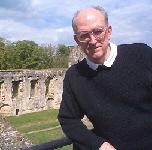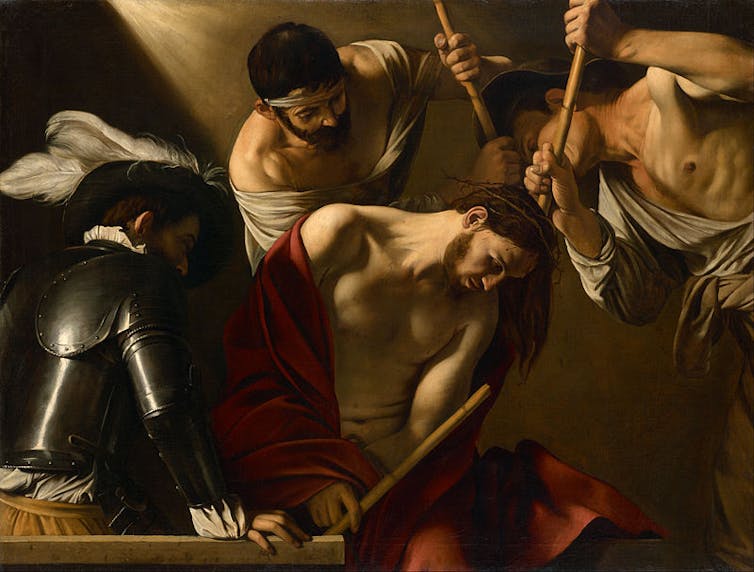Caressing the arpeggios: Shirley Hunt does Bach’s cello suites
The Bach suites for solo cello can leave you suffused, body and soul, with their plangent resonances if you allow them to. These six intimate pieces seem conceived to exploit the sensual nature of the cello.
Since the revival of the suites in the 1990s, cellists have taken them to the concert stage often enough to make them standard repertoire. The CD catalog is replete with personalized interpretations by the great masters of the instrument, including Mstislav Rostropovich, Paul Tortelier, Pablo Casals and Yo-yo Ma.
Now comes Shirley Hunt from Cambridge, Massachusetts, with her soulful renditions of two of the favorites, No. 1 in G major (BWV 1010) and No. 4 in E flat major (BWV 1007), performed on her baroque William Forster Sr. cello dated from 1775 (Letterbox Arts). This is the first of an ambitious three-CD series.
Ms. Hunt fairly caresses the Bach arpeggios in these first pieces, producing a resonant, singing tone that stays in the mind. Her grandiose opening of No. 4 in E flat major is a stunner, and her sensitive phrasing coaxes what she believes to be Bach’s intentions throughout. The climactic Gigue movement leaves one breathless. The G major was familiar enough upon first hearing to set me humming along with her.
 I was sufficiently taken by Ms. Hunt’s high-wire (no net) interpretations that I turned to her program notes to see where she was coming from. Her brief notes are almost poetic as her playing. “Bach has staying power in a world littered with ephemera,” she writes. To experience the suites is to “touch something mysterious and deep, so deep it cannot be named, only felt – as one feels the humming of the earth in a mountain peak or the trunk of a giant sequoia”.
I was sufficiently taken by Ms. Hunt’s high-wire (no net) interpretations that I turned to her program notes to see where she was coming from. Her brief notes are almost poetic as her playing. “Bach has staying power in a world littered with ephemera,” she writes. To experience the suites is to “touch something mysterious and deep, so deep it cannot be named, only felt – as one feels the humming of the earth in a mountain peak or the trunk of a giant sequoia”.
The secret is the open strings on the cello that Bach specified, notably the prelude to No. 1 in G major that calls for resonating G and D, defining, as one critic put it, “the essence of the piece: ringing, soothing, pure, natural”.
I further pursued Ms. Hunt for a few words on the preparation that went into these recordings. She responded that they have been in her repertoire since high school, college and conservatory days. But there is no end to the study of Bach, she says. “There are so many layers to dissect, understand and experience. The scope for interpretation means that Bach has created, in effect, a kind of laboratory in which “each performance or recording opportunity allows different facets of this poetic music to emerge or retreat”.
She spent a full year concentrating on the three selections on this disc, including seven weeks of total immersion while artist-in-residence at the Banff Centre for the Arts, Alberta, Canada, a highly regarded “creativity incubator”. Her goal at several performances of these works during her stay was to deliver interpretations that were “never the same twice”.
Technical feats in No. 4 call on great physical discipline, including “lots of complicated finger work to execute even the simplest- sounding passages”, she tells me. Only a cellist might appreciate that there are few open-string passages in the E flat major suite so that “an incredible amount of endurance is required – something one must practice in the manner of a marathon runner. The object being to train the body to perform over long stretches “with as much grace and ease as possible”.
Ms. Hunt’s playing is also a delight to observe. Regrettably these two suites are not yet up on YouTube but No. 6 in D minor is. I found her elegant, long-fingered technique fascinating to watch while connecting with her personal absorption in the music.
https://www.youtube.com/watch?v=z32OjC4cQwI
Also on this CD is an example of Ms. Hunt’s other main instrument, the viola da gamba, with Ian Pritchard on the harpsichord, playing Sonata No. 3 in G minor (BWV1029). Ms. Hunt said it best. This piece offers “a glimpse of vibrant sociability amongst musical lines, a balanced cup brimming with ebullient chatter and cascades of splendid counterpoint”.
The cello suites have inspired interesting variations from major composers, bringing the full keyboard to bear – including piano accompaniment by Robert Schumann and complete transcriptions Leopold Godowsky. Some other reworkings are on the goofy side (the tuba, ukelelee).
The Cinema has not overlooked the dramatic impact hidden inside the cello’s sonorities. Susan Sarandon literally sets her cello on fire in The Witches of Eastwick and Jack Nicholson convincingly plays her accompanist and mentor, among other things. “Let it out,” Nicholson implores. And she does.
A slightly more subdued role of the cello is in Christopher Walken’s hands in A Late Quartet. Sarandon and Walken needed extensive tutoring to fake the fingerings and body language but the sound track by professionals made the most of the cello’s growling, soaring, not to say erotic, potential.
https://www.youtube.com/watch?v=YF6FluTRdD0&list=PLPWZv5--hK0umufCgZif5otVN5h-557x_
Ms. Hunt ranges widely in the solo and ensemble repertoire but for her, Bach is in a class by himself. As she put it, Bach offers the “infinite possibility and continual promise of renewal and refreshment through repeat listening, repeat performances and even new and inventive arrangements”.
The CD is available at www.letterboxarts.com:

This article is brought to you by the author who owns the copyright to the text.
Should you want to support the author’s creative work you can use the PayPal “Donate” button below.
Your donation is a transaction between you and the author. The proceeds go directly to the author’s PayPal account in full less PayPal’s commission.
Facts & Arts neither receives information about you, nor of your donation, nor does Facts & Arts receive a commission.
Facts & Arts does not pay the author, nor takes paid by the author, for the posting of the author's material on Facts & Arts. Facts & Arts finances its operations by selling advertising space.




















